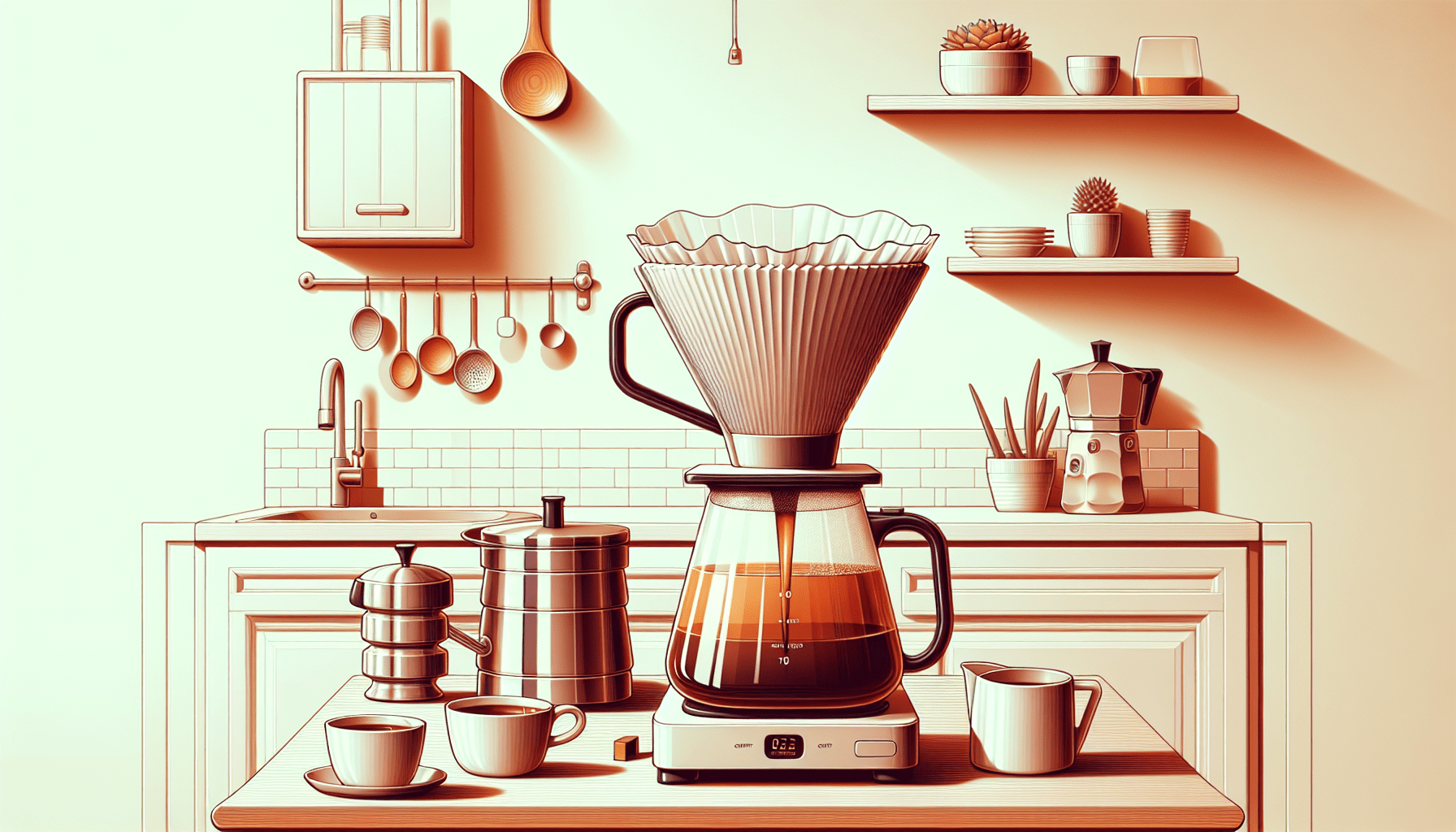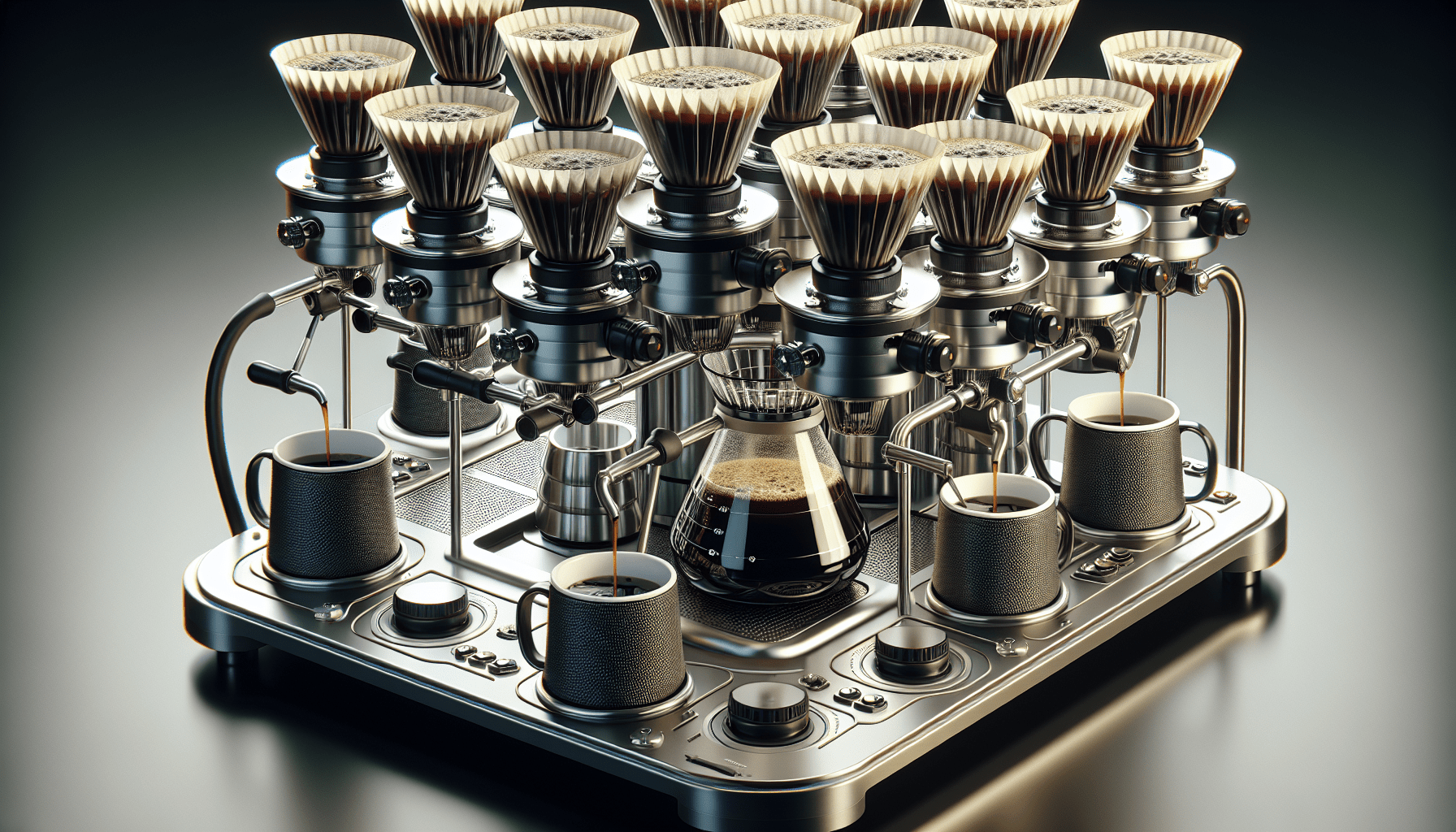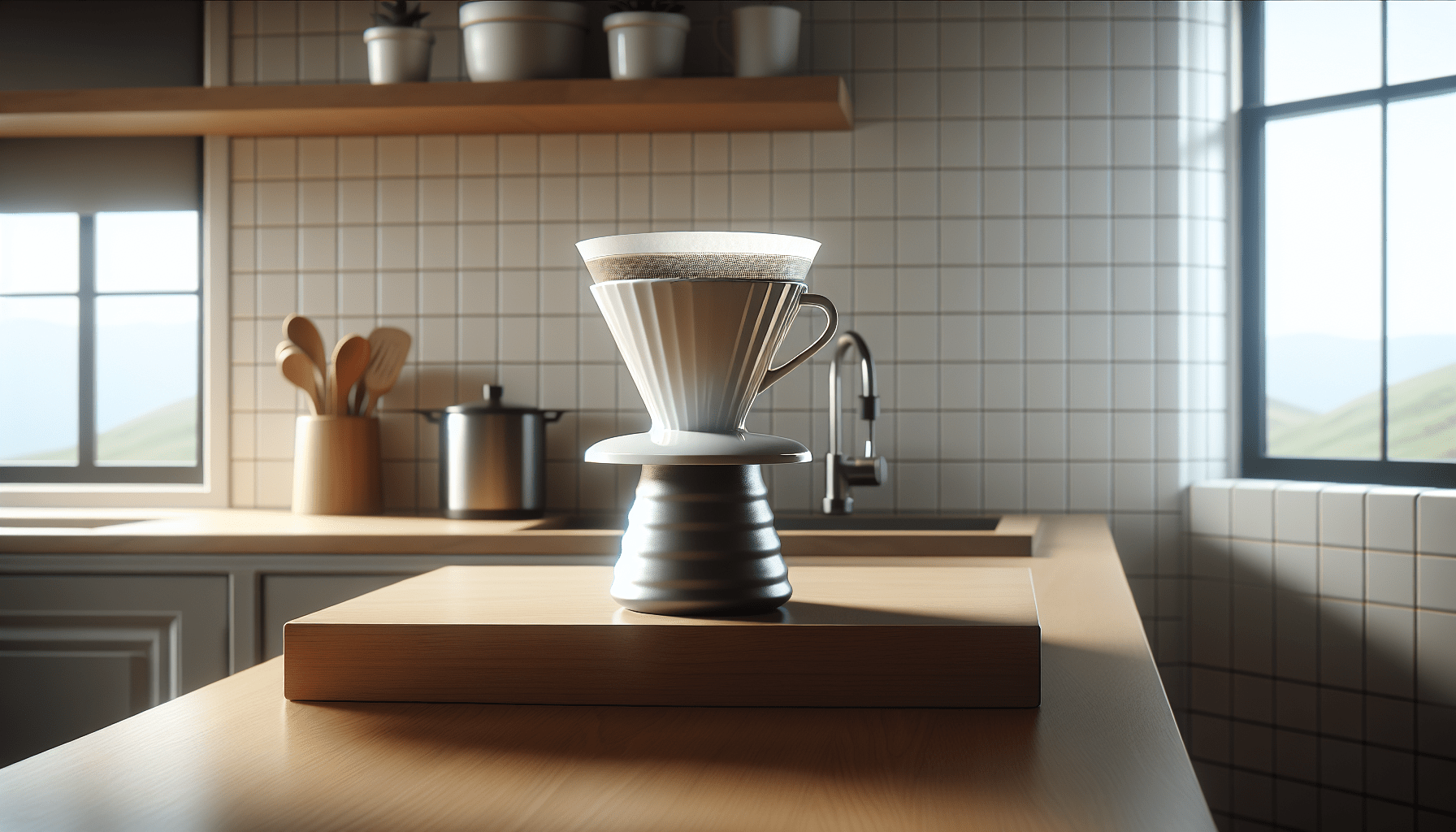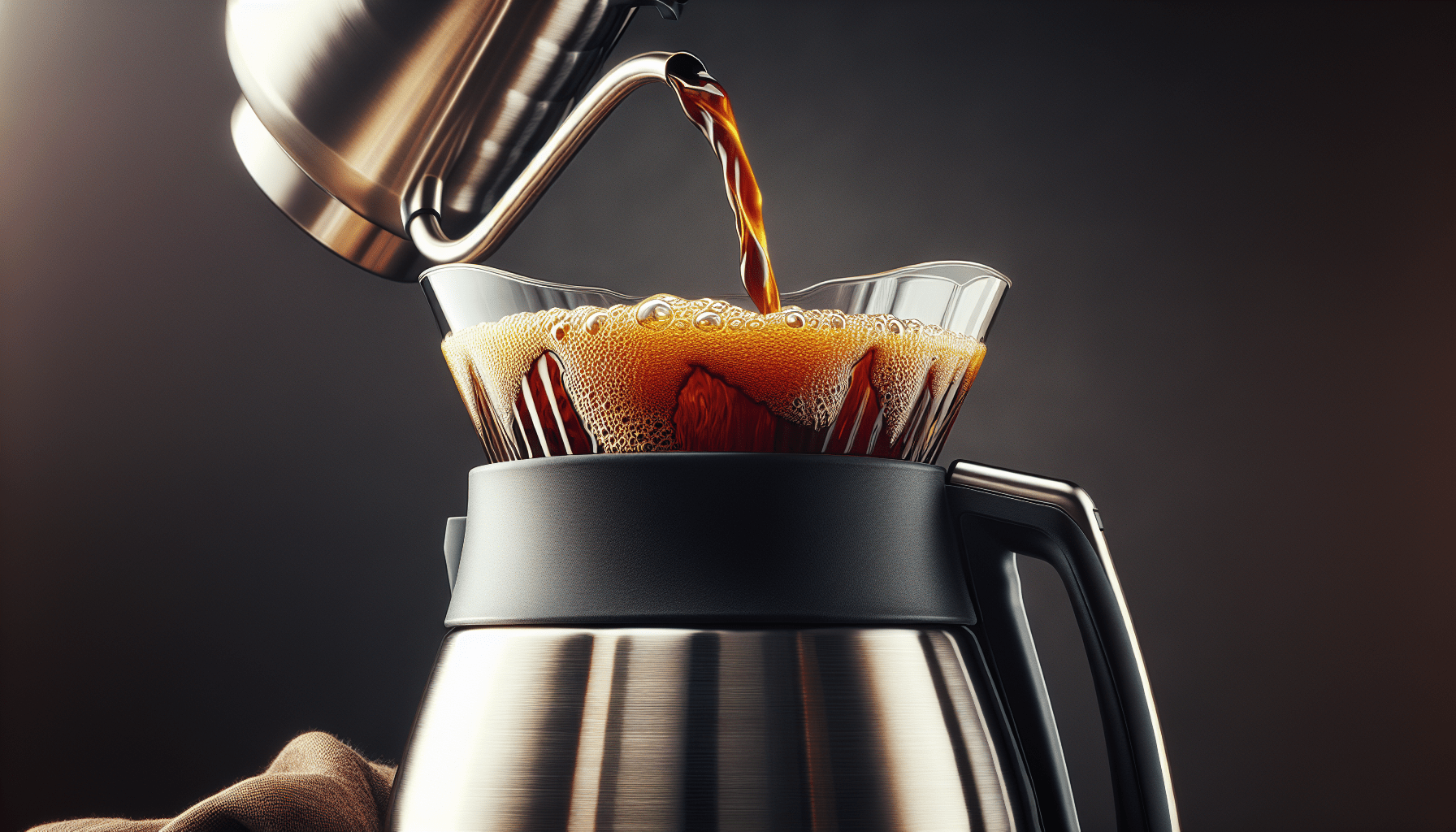If you’re a coffee enthusiast in search of the perfect cup, chances are you’ve heard of pour-over coffee makers. But you may be wondering, are these sleek gadgets as easy to use as they claim? With their elegant design and promise of a rich, flavorful brew, it’s natural to have some doubts. Fear not, dear reader, for we are here to assure you that pour-over coffee makers are not only easy to use but also a delightful addition to your morning routine. In this article, we will explore the simplicity and rewards of using these devices, providing you with all the tips and tricks needed to become a pour-over pro.
Overview of pour-over coffee makers
Definition and purpose
Pour-over coffee makers are a popular method of brewing coffee that involves manually pouring hot water over coffee grounds. The purpose of using a pour-over coffee maker is to achieve a flavorful and aromatic cup of coffee by allowing the water to extract the coffee’s oils and flavors. This method provides control over various brewing variables, such as water temperature, pour rate, and coffee-to-water ratio, resulting in a customizable coffee experience.
Variety of pour-over coffee makers available
There is a wide variety of pour-over coffee makers available on the market, each with its own unique design and features. Some popular options include the Hario V60, Chemex, Kalita Wave, and Melitta. These coffee makers differ in terms of materials, size, shape, and brewing technique, allowing coffee enthusiasts to choose one that best suits their preferences and brewing style.
Benefits of using pour-over coffee makers
Using a pour-over coffee maker offers several benefits. Firstly, it allows for better control over the brewing variables, ensuring that each cup of coffee is brewed to perfection. This control over the process can result in a more consistent and higher-quality brew compared to other brewing methods. Additionally, pour-over coffee makers enhance the flavor and aroma of the coffee, as the slow and precise pouring technique allows for the optimal extraction of flavors from the coffee grounds. Lastly, the customizable nature of pour-over brewing allows coffee lovers to experiment and adjust the brewing process to suit their personal taste preferences.
Components of a pour-over coffee maker
Coffee dripper
The coffee dripper is the main component of a pour-over coffee maker. It is a cone-shaped device that holds the coffee filter and coffee grounds. The design of the dripper plays a crucial role in the extraction process, as it allows for a controlled flow of water over the coffee grounds.
Coffee filter
The coffee filter is placed inside the dripper to hold the coffee grounds and prevent them from entering the brewed coffee. There are different types of filters available, including paper filters, metal filters, and cloth filters. Each type of filter can affect the taste and clarity of the brewed coffee, so it is important to choose one that aligns with your preferences.
Coffee grounds
The coffee grounds used in a pour-over coffee maker should be freshly and evenly ground for optimal extraction. The grind size should be medium-fine, similar to the texture of granulated sugar. Using the correct amount of coffee grounds is essential to achieve the desired strength and flavor in your cup of coffee.
Gooseneck kettle
A gooseneck kettle is a crucial tool for pour-over brewing. Its long and narrow spout allows for precise and controlled pouring of hot water over the coffee grounds. The gooseneck design ensures that water is poured evenly and at the desired rate, contributing to a consistent extraction process.
Scale
A scale is a useful tool for measuring the exact amount of coffee grounds and water needed for brewing. By using a scale, you can achieve consistency in your brewing process and maintain the desired coffee-to-water ratio.
Mug or carafe
The final component of a pour-over coffee maker is the container that collects the brewed coffee. Whether you prefer to brew directly into a mug or a larger carafe, make sure it is clean and suitable for hot liquids.
Step-by-step guide to using a pour-over coffee maker
Step 1: Heat water to optimal temperature
Start by heating water to the optimal brewing temperature, which is typically around 195-205°F (90-96°C). This temperature range allows for proper extraction of coffee flavors while avoiding over-extraction and bitterness.
Step 2: Grind coffee beans
Grind the coffee beans using a grinder set to a medium-fine consistency. The amount of coffee grounds needed will depend on your desired strength, but a common ratio is 1:16, where 1 part coffee is to 16 parts water.
Step 3: Place a filter in the dripper
Insert a coffee filter into the dripper. Make sure to fold the filter’s seams to fit snugly in the dripper without any gaps.
Step 4: Rinse the filter with hot water
Pour hot water over the filter to rinse out any paper taste and preheat the dripper and mug or carafe. Discard the rinse water.
Step 5: Add coffee grounds to the filter
Place the coffee grounds in the filter, ensuring they are evenly distributed. Gently tap the dripper to settle the grounds.
Step 6: Bloom the coffee
Pour a small amount of hot water, about twice the weight of the coffee grounds, over the center of the grounds. Let it sit for 30 seconds to allow the coffee to bloom and release carbon dioxide.
Step 7: Begin pouring water over the coffee
Start pouring water in a slow, circular motion, starting from the center and moving outward. Maintain a steady and controlled pour to saturate all the grounds evenly.
Step 8: Pour in a controlled manner
Continue pouring water, using a gooseneck kettle if possible, in a steady stream. Aim to pour in a controlled manner to maintain an even extraction. Avoid pouring directly on the sides of the filter, as this can bypass the coffee grounds.
Step 9: Allow the coffee to drip into the mug or carafe
As you pour, the coffee will slowly drip through the filter into the mug or carafe. Adjust your pouring speed to control the brew time and strength of the coffee.
Step 10: Enjoy your pour-over coffee
Once all the water has passed through the coffee grounds, remove the dripper, and savor your freshly brewed pour-over coffee.
Factors affecting the ease of using pour-over coffee makers
Experience level of the user
The experience level of the user can significantly impact the ease of using a pour-over coffee maker. Beginners may find the process more challenging at first, but with practice and familiarity, it becomes easier to achieve consistent results.
Quality of equipment
The quality of the pour-over coffee maker and accompanying tools, such as the gooseneck kettle and scale, can affect the brewing process. Investing in high-quality equipment ensures better control and precision during brewing, making the overall experience easier and more enjoyable.
Grind size and consistency
The grind size and consistency of the coffee grounds play a vital role in the extraction process. Unevenly or incorrectly ground coffee can lead to uneven extraction and affect the taste of the brewed coffee. Using a consistent grind size and adjusting it to match the brewing method can make the process easier and more successful.
Water temperature
Maintaining the proper water temperature throughout the brewing process is essential for optimal extraction. If the water is too hot or too cold, it can impact the flavor and quality of the coffee. Using a kettle with temperature control or a reliable thermometer can help ensure the water is at the desired temperature, making the process easier to manage.
Pouring technique
Mastering the pouring technique takes practice and attention to detail. The ability to pour water in a slow, controlled, and consistent manner directly affects the extraction process. Experimenting with different pouring methods and finding one that works for you can improve the ease of using a pour-over coffee maker.
Brewing time
The brewing time can be adjusted to achieve different flavor profiles. However, it is crucial to have a consistent brewing time to ensure consistency in the final cup of coffee. Monitoring the brewing time and adapting it to suit your preferences can enhance the ease of brewing with a pour-over coffee maker.
Advantages and disadvantages of using pour-over coffee makers
Advantages:
- Control over brewing variables: Pour-over coffee makers offer the ability to control various aspects of the brewing process, such as water temperature, pour rate, and coffee-to-water ratio. This control allows for a customized brewing experience and the ability to fine-tune the flavor and strength of the coffee to personal preferences.
- Enhanced flavor and aroma: The slow and precise pouring technique used in pour-over brewing helps extract the full range of flavors and aromas from the coffee grounds, resulting in a tastier and more aromatic cup of coffee. The clean and pure taste of pour-over coffee is favored by many coffee enthusiasts.
- Customizable brewing process: Pour-over brewing allows for flexibility and experimentation. Coffee lovers can adjust brewing variables to suit their taste preferences and explore different flavor profiles from various coffee beans. This customization adds to the allure of using pour-over coffee makers.
Disadvantages:
- Requires time and attention: Brewing coffee using a pour-over coffee maker takes time and requires attention to detail. From heating the water to mastering the pouring technique, the process demands patience and concentration. It may not be the ideal brewing method for those looking for a quick and convenient cup of coffee.
- Additional equipment needed: Compared to other brewing methods, pour-over coffee makers generally require more equipment, such as a gooseneck kettle and a scale. While these tools can enhance the brewing experience, they may not be readily available or accessible to everyone.
- Possibility of inconsistency: Mastering the art of pour-over brewing takes practice, and even seasoned coffee enthusiasts sometimes encounter inconsistencies in their brews. Factors like pouring technique, grind size, and water temperature can influence the consistency of the final cup. Achieving consistent results may require some trial and error.
Tips for beginners using pour-over coffee makers
Start with a beginner-friendly pour-over coffee maker
For beginners, starting with a user-friendly pour-over coffee maker can make the learning process easier. Opt for models like the Hario V60 or the Kalita Wave, which have straightforward designs and are forgiving with pouring techniques.
Use a coffee grinder with a consistent grind size
Investing in a good-quality coffee grinder with adjustable settings allows for consistent grind size. This consistency ensures an even extraction and better control over the brewing process.
Experiment with different coffee-to-water ratios
Play around with different coffee-to-water ratios to find the perfect balance for your taste preferences. Adjusting the ratio can result in a stronger or milder cup of coffee, allowing you to fine-tune the flavor according to your preferences.
Practice pouring technique
Pouring technique plays a significant role in pour-over brewing. Practice pouring in a slow, steady, and controlled manner to achieve an even extraction. Experiment with different pouring patterns and observe the impact on the flavor of the coffee.
Keep track of brewing variables for future reference
To improve your brewing skills, keep a record of the brewing variables used for each cup of coffee, such as water temperature, grind size, and brewing time. This record will help identify patterns and allow for adjustments to achieve consistent results.
Common troubleshooting issues with pour-over coffee makers
Uneven extraction
Uneven extraction can occur when water does not flow evenly through the coffee grounds, resulting in an imbalanced flavor profile. To address this, ensure an even distribution of coffee grounds within the filter and pour water in a spiraling motion to saturate all the grounds evenly.
Bitter or overly acidic taste
A bitter or overly acidic taste may indicate over-extraction or under-extraction of the coffee. Adjust the brewing variables, such as the grind size, water temperature, and brewing time, to balance the flavors and achieve a more enjoyable cup of coffee.
Slow or fast brewing time
If the brewing time is consistently slower or faster than expected, it may signify an issue with the grind size or pour rate. Adjusting the grind size or pour technique can help regulate the brewing time.
Clogging of the filter
If the filter becomes clogged during the brewing process, it can impede the flow of water and result in a prolonged brewing time. To prevent clogging, ensure an even grind size and avoid packing the coffee grounds too tightly in the filter.
Cleaning and maintenance of pour-over coffee makers
Rinse the coffee dripper and filter after each use
After each use, rinse the coffee dripper and filter with hot water to remove any residual coffee oils and grounds. This prevents the buildup of residue that can affect the flavor of future brews.
Regularly clean the gooseneck kettle
Clean the gooseneck kettle regularly, especially if it comes into contact with minerals from hard water. A simple solution of vinegar and water can be used to descale the kettle and remove any buildup.
Descale the kettle when necessary
If the gooseneck kettle becomes visibly scaled or develops a metallic taste, it is time to descale it. Follow the manufacturer’s instructions or use a commercial descaling solution to remove the mineral deposits.
Deep clean the coffee maker periodically
Periodically, give your pour-over coffee maker a thorough cleaning. Disassemble any removable parts, such as the dripper, and wash them with warm, soapy water. Use a brush to scrub away any residue that may have accumulated. Rinse thoroughly and allow all parts to dry completely. This deep cleaning will help maintain the quality and taste of your coffee.
Conclusion
In conclusion, pour-over coffee makers provide an excellent brewing method for those seeking full control over the coffee-making process. While it may take some practice to master the technique, the rewards come in the form of enhanced flavors, aromas, and customization options. The components of a pour-over coffee maker, such as the coffee dripper, filter, coffee grounds, gooseneck kettle, scale, and mug or carafe, all play an integral role in achieving the perfect cup. Factors that affect the ease of using pour-over coffee makers include the user’s experience level, the quality of equipment, grind size, water temperature, pouring technique, and brewing time. Despite their advantages, pour-over coffee makers do have some disadvantages, such as the need for time, attention, and additional equipment. For beginners, it is recommended to start with a beginner-friendly pour-over coffee maker and practice pouring technique. Keeping track of brewing variables can also help improve consistency. Common troubleshooting issues, such as uneven extraction or bitter taste, can be addressed by adjusting various brewing variables. Regular cleaning and maintenance, including rinsing the dripper and filter, descaling the gooseneck kettle, and deep-cleaning the coffee maker, are essential for maintaining the quality and longevity of the pour-over coffee maker. Overall, pour-over coffee makers offer a delightful and customizable brewing experience for those who appreciate the quality and artistry of a well-brewed cup of coffee.




